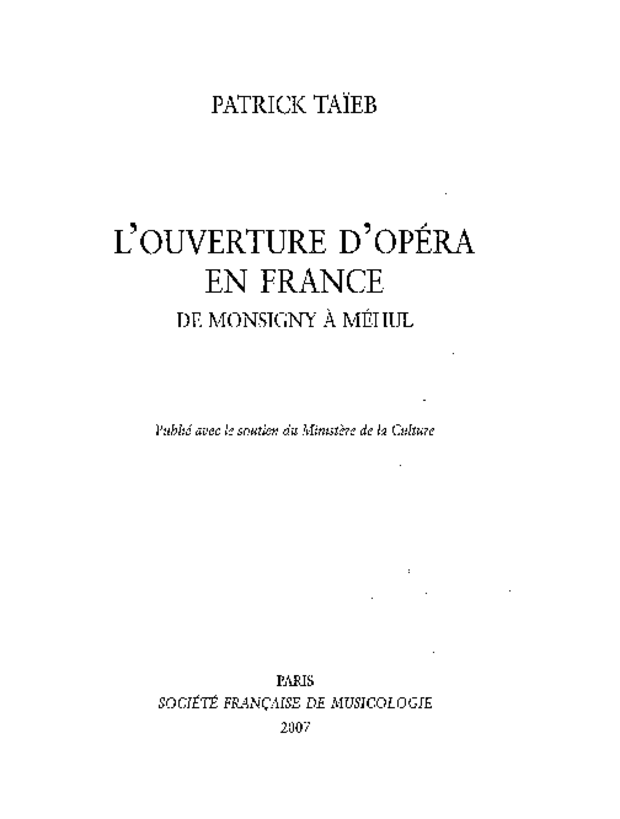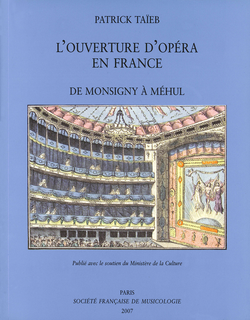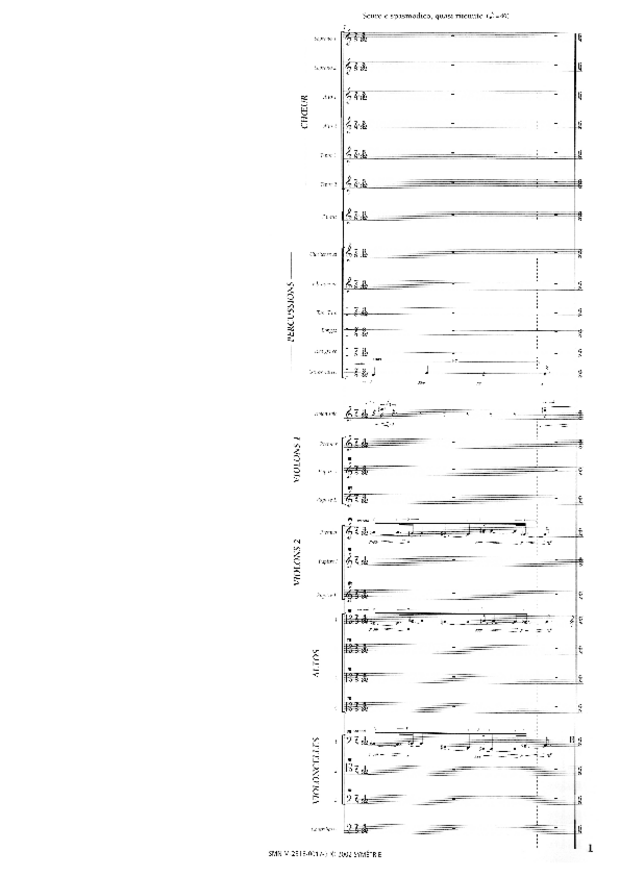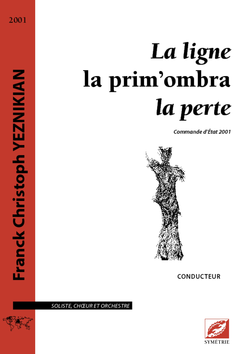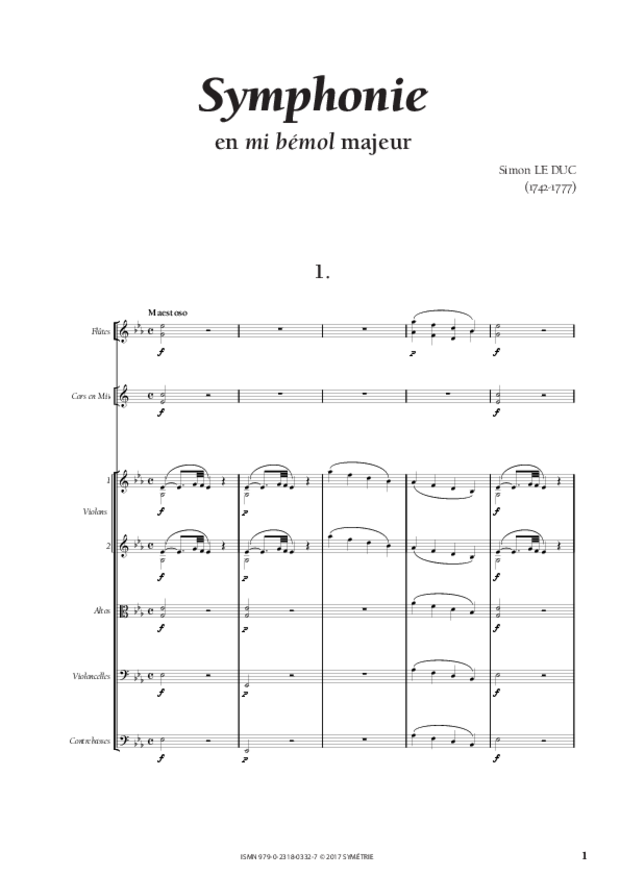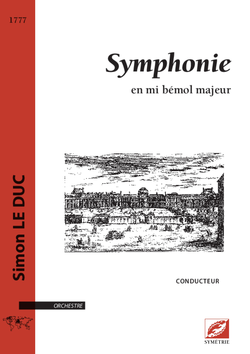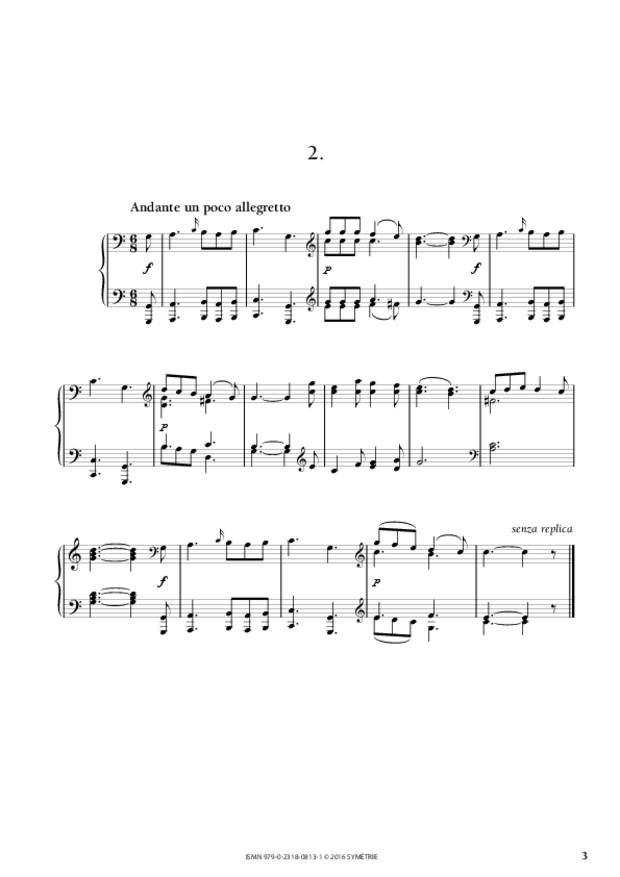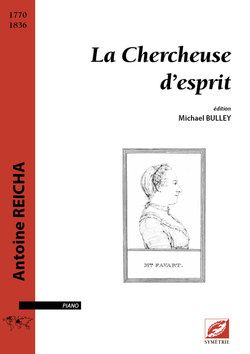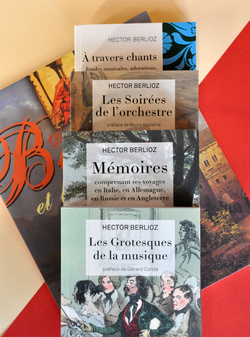This 4th Symphony was most probably created on 24 February 1857 at the Société des concerts du Conservatoire, as they announced as part of the programm a “new symphony” by Reber. The previous ones were given for the first time in the 1840s in the same context at the Concerts of the Sainte-Cécile Society. As the critics of that time and Saint-Saëns stressed it, Reber was one of the few French composers of his time to have an interest in the symphony genre. He managed to come to a synthesis of the German and French tastes and showed his attachement to Mozart and Beethoven, his “favorite masters” according to Saint-Saëns. From a point of view of character, there is a real impetus animating the whole symphony, whose fluency in the development of ideas shows the utimate musical identity of the composer. The main theme of this, his final, symphony is one of striking simplicity. The debt to Beethoven makes itself felt, too, in the abrupt changes of colour and the aptly heroic style of the motif. The second movement, in C minor, is reminiscent of Mozart with the role given to the clarinet and the chamber music atmosphere of the soli. In this second movement, there is a rather subtle quotation of the main theme of the last movement of the Piano Trio op. 1 no 3 by Beethoven. After an energetic scherzo, the symphony ends in a joyful and virtuoso finale in the main key tone. The theme is played pp by entrances in imitation between the different instruments of the string quartet before being joigned by the whole orchestra in a triumphant tutti.
Jean-Charles Lombart
under the scientific guidance of
Anne-Sylvie Barthel-Calvet,
(department of Music and Musicology of
UFR Arts Lettres et Langues-Metz, Université de Lorraine)
(translation Philippe Do)
Sommaire
- I. Allegro
- II. Andantino sostenuto
- III. Scherzo : allegro
- IV. Final : allegro
Audio Excerpts
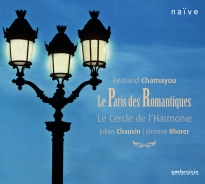
I. Allegro
II. Andantino sostenuto
III. Scherzo : allegro
IV. Final : allegro
Panorama de presse
Souffle, respiration, surtout volumétrie et espace sonore totalement régénérés restituent ici toutes les nuances et les accents d’une œuvre admirablement écrite : la lecture de la symphonie du compositeur Napoléon Henri Reber, aujourd’hui totalement méconnu, affirme en 1857, toute la brillance de ce symphonisme romantique français à redécouvrir d’urgence.
Benjamin Ballifh, Classiquenews.com
On s’inclinera en revanche sans ironie devant le métier de la Symphonie n°4, d’Henri Reber, un compositeur dont Berlioz loua dans ses écrits critiques, À travers chants (chapitre XXVI), le style mélodique “toujours distingué et pur”, l’instrumentation “soignée, fine, souvent ingénieuse”.
Marie-Aude Roux, Le Monde.fr
Nomenclature
2 flûtes, 2 hautbois, 2 clarinettes, 2 bassons, 4 cors, 2 trompettes, timbales, cordes
All available forms
-
sheet music pour orchestre
-
matériel (2.2.2.2. – 4.2.0.0. –timb - 10.8.6.5.4)
2 flûtes, 2 hautbois, 2 clarinettes, 2 bassons, 4 cors, 2 trompettes, timbales, cordes · 30 min · 21 x 29.7 cm · spiral booklet · 233 pages · ISMN 979-0-2318-0594-9
Publisher : Symétrie
on hire
-
conducteur de lecture au format A4
stapled booklet · ISMN 979-0-2318-0593-2
Publisher : Symétrie
Price : €71.00
-
conducteur de direction au format A3
29.7 x 42 cm · ISMN 979-0-2318-0873-5
Publisher : Symétrie
Price : €97.00
-
